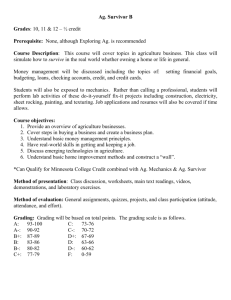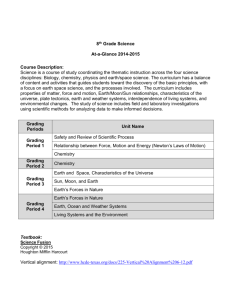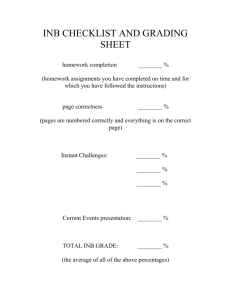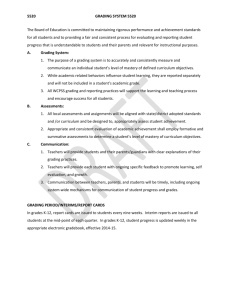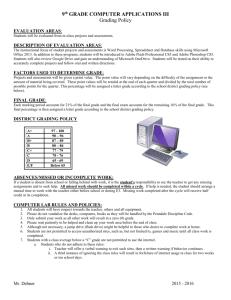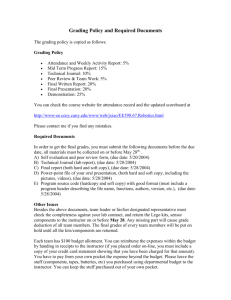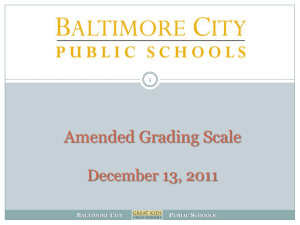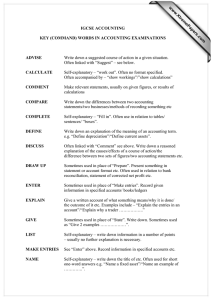env_report_guidelines
advertisement
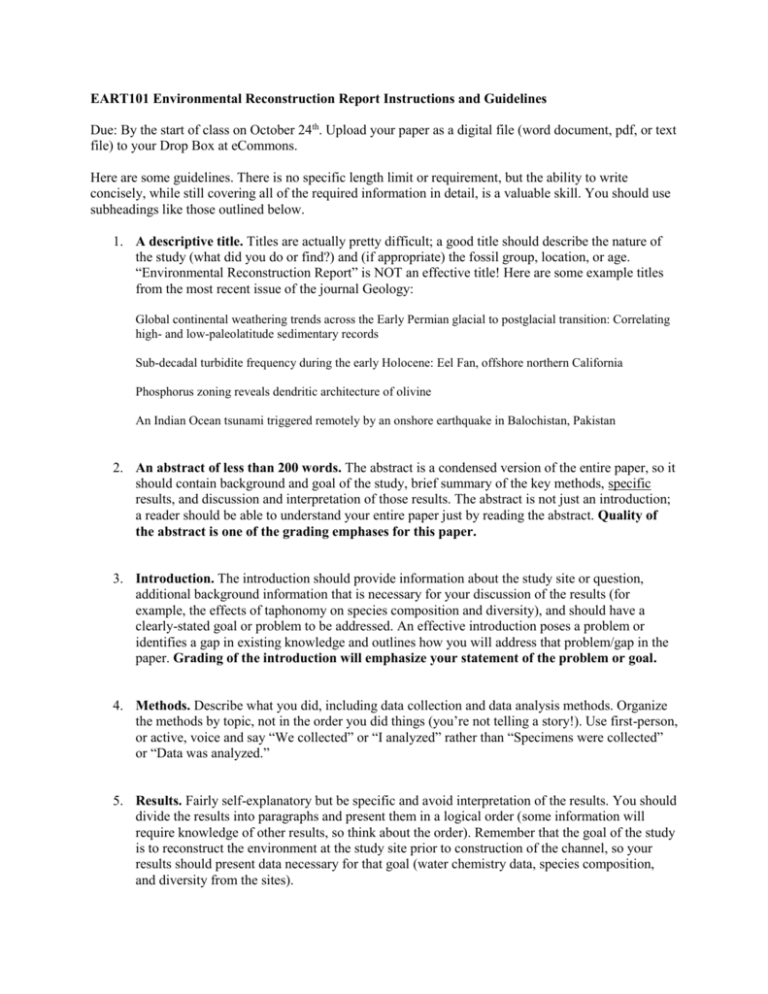
EART101 Environmental Reconstruction Report Instructions and Guidelines Due: By the start of class on October 24th. Upload your paper as a digital file (word document, pdf, or text file) to your Drop Box at eCommons. Here are some guidelines. There is no specific length limit or requirement, but the ability to write concisely, while still covering all of the required information in detail, is a valuable skill. You should use subheadings like those outlined below. 1. A descriptive title. Titles are actually pretty difficult; a good title should describe the nature of the study (what did you do or find?) and (if appropriate) the fossil group, location, or age. “Environmental Reconstruction Report” is NOT an effective title! Here are some example titles from the most recent issue of the journal Geology: Global continental weathering trends across the Early Permian glacial to postglacial transition: Correlating high- and low-paleolatitude sedimentary records Sub-decadal turbidite frequency during the early Holocene: Eel Fan, offshore northern California Phosphorus zoning reveals dendritic architecture of olivine An Indian Ocean tsunami triggered remotely by an onshore earthquake in Balochistan, Pakistan 2. An abstract of less than 200 words. The abstract is a condensed version of the entire paper, so it should contain background and goal of the study, brief summary of the key methods, specific results, and discussion and interpretation of those results. The abstract is not just an introduction; a reader should be able to understand your entire paper just by reading the abstract. Quality of the abstract is one of the grading emphases for this paper. 3. Introduction. The introduction should provide information about the study site or question, additional background information that is necessary for your discussion of the results (for example, the effects of taphonomy on species composition and diversity), and should have a clearly-stated goal or problem to be addressed. An effective introduction poses a problem or identifies a gap in existing knowledge and outlines how you will address that problem/gap in the paper. Grading of the introduction will emphasize your statement of the problem or goal. 4. Methods. Describe what you did, including data collection and data analysis methods. Organize the methods by topic, not in the order you did things (you’re not telling a story!). Use first-person, or active, voice and say “We collected” or “I analyzed” rather than “Specimens were collected” or “Data was analyzed.” 5. Results. Fairly self-explanatory but be specific and avoid interpretation of the results. You should divide the results into paragraphs and present them in a logical order (some information will require knowledge of other results, so think about the order). Remember that the goal of the study is to reconstruct the environment at the study site prior to construction of the channel, so your results should present data necessary for that goal (water chemistry data, species composition, and diversity from the sites). 6. Discussion. Also fairly self-explanatory – you discuss and interpret the results. What do they mean? Make sure to justify your interpretation, which may require explanation of other factors that may bias the data (and explanation of how you dealt with those biases or why they are not important). What are their implications for the problem or goal you outlined in the introduction? Separation of results (presented in your Results section) and their interpretation will be a grading emphasis. 7. Conclusion. Recap the problem or goal, the key results, and how those results help you answer the problem or achieve the goal. Don’t introduce new data in the conclusion. 8. Figures and Tables. You should include maps or graphs (as figures) and data tables as necessary. Figures/tables can be included at the end of the document, or within the text (it’s your choice). Figures should be numbered sequentially (Figure 1, Figure 2, etc.) and tables should also be numbered separately (Table 1, etc.). All figures and tables need captions and must be referenced in order in the text. The most common way is to include a parenthetical call of the figure; for example, “Diversity was higher in death assemblages than in life assemblages (Fig. 1).” Don’t say “Figure 1 shows that…”

